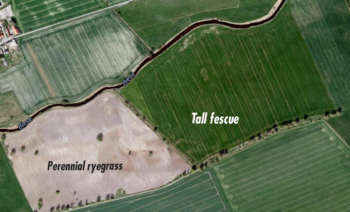5 recommendations to deal with shortage of forage
A severe drought has affected Europe in May and June. Many farmers are struggling to keep their forage production going and shortages may be expected for the rest of the year. Barenbrug offers farmers five recommendations for dealing with this situation:

In many areas farmers are at least one cut of grass behind. One way of gaining one to two extra cuts in autumn is by sowing short-term grass mixtures this summer. Products like “Prota Plus” grow very fast and can yield high-quality forage within a short period. Freshly harvested cereal fields are ideal for planting temporary grasses, to help farmers make up for shortages. For more information about Prota Plus look at the Prota Plus movie.

Slurry and fertilisers should be used in fields with the highest yield potential and water-holding capacity to maximise yields of the entire farm throughout the rest of the season. Slurry can be diluted with water to boost the plants’ absorption of minerals. Soil nitrogen mineralisation usually peaks in late summer, when there’s a shortage in potassium and sodium. Extra doses of K and Na should be supplied to optimise growth in the rest of the year.

Dairy farmers can try using a different grazing strategy to increase grass utilisation. It is known that continuous grazing and low stocking rates usually lead to lower grass yields. Farmers using such systems are well advised to switch to systems like strip-grazing or on/off grazing to increase their grass utilisation in the rest of the summer.

Farms’ feed stocks will be small next winter. High spring yields will be needed in 2016 to compensate for this. That can only be realised with grassfields in perfect condition. Farmers should evaluate their pastures and plan grassland renovation early. In case of more than 25% weeds or weed grasses it pays to reseed. Otherwise overseeding may be effective to boost production in fields affected by drought.

This drought ‘separates the men from the boys’ in the world of grass. This summer NutriFibre tall fescue is really proving its worth, showing that it is much better capable of dealing with this situation and that it is a more reliable grass source for farmers.

Tall fescue can root to depths of up to 100 cm and produces yields that are on average 30% greater than those of perennial ryegrass. For more information about NutriFibre look at the NutriFibre movie.
This pictures shows that NutriFibre is much better capable of dealing with drought than perennial ryegrass (Germany June 2015):

